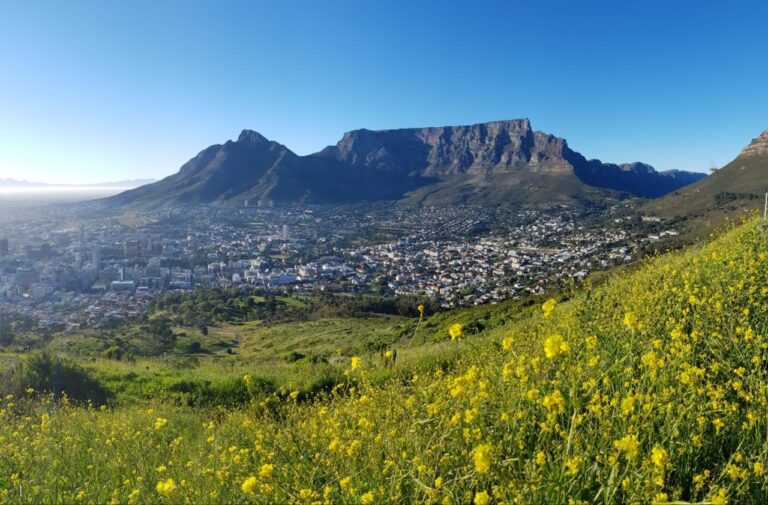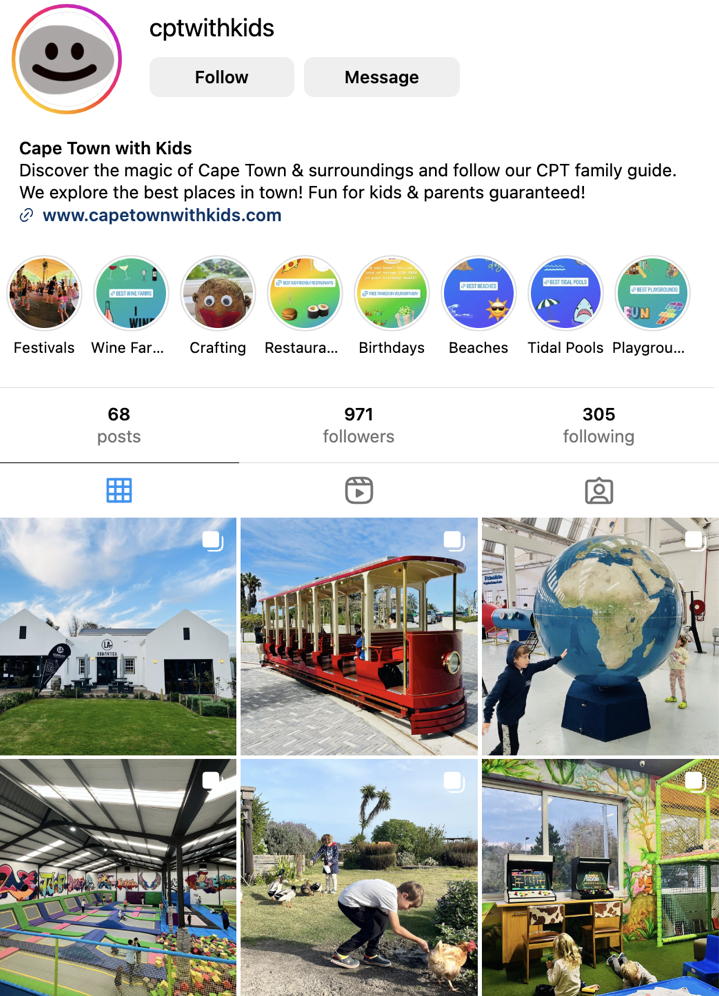Are you excited to travel to Cape Town or South Africa for the first time? You should be, because this is one of the most beautiful cities in the world and a definitive MUST-DO on your bucket list. If you think the weather in Africa is sizzling hot all year around, we must disappoint you, unfortunately. We do have seasons like most other countries, but we simply switch them around. In general, the seasons in South Africa are opposite to those in the Northern Hemisphere.
Summer: December to February
Winter: June to August
But here is the good news: South Africa is worth a visit at any time of the year. Due to the size of the country and the different climate zones, you’ll always find a perfect holiday spot for you and your family depending on what you’re planning to do and the activities involved.
In the Western Cape and especially around Cape Town, you’ll have dry and hot summer months and a lot of rain during winter. In the rest of the country, it’s more or less the other way around: You have frequent thunderstorms in summer, but the winter months are dry and sunny at slightly cooler temperatures. Just pick your travel route wisely and you won’t be disappointed.
Best Travel Time based on Activities
Surely, when you’re planning to visit South Africa, you already have something particular in mind. Whether you’re looking for a relaxing beach holiday, a hiking experience in the Drakenberg area, a road trip along the Garden Route, whale watching at the shores of the Western Cape or an exciting Safari in the famous Kruger National Park: South Africa has it all and you should plan your travel in the perfect season for each of those activities.
- Cape Town & Garden Route: November to April (the Durban coast is great all year round and the water much warmer than in the rest of the country)
- Whale watching in Hermanus: June to October
- Safari at Kruger National Park: June to September
- Hiking at the Drakenberg area: June to September
- Flower Season in the Western Cape: August to September
You see, there is a lot to to and to discover even in the South African winter months and every season has it’s own charm. What I personally like most: even if the summer days are sunny and hot and temperatures reach a high of over 30 degrees, you’ll barely find the weather unpleasant because of the very low humidity in the air and a soft breeze coming from the ocean in Cape Town.
The Cape Doctor
What I do find unpleasant though is our so-called Cape Doctor (or South Easter) in summer! When you think you have experienced a windy day in your own country, you’ll be flabbergasted by the strong wind in Cape Town and the Cape Peninsula. The Cape Doctor is a persistent, dry south-easterly wind that usually blows at the South African coast from spring to late summer (September to March). You cannot say we didn’t warn you! BUT: We always say that the wind knows the time of the day as it usually only starts blowing in the late afternoon or evening hours where you’re not really bothered by it anymore. And, of course, it doesn’t blow every single day in summer. You have those quiet, lovely weeks in between where the Cape Doctor is taking a small break. When he is on its way though, you’ll get an early warning sign by Cape Town’s iconic Table Mountain. Just check the mountain’s table top and you’ll be able to predict whether the wind is coming or not.
When it’s going to be a windy day, you’ll find the mountain covered in those white clouds as they beautifully snuggle around the top and fall down like a pretty tablecloth. We have taken countless pictures of this beautiful phenomenon and can’t get enough of it. You have to see it with your own eyes and it will make you forget the windy hours that usually follow. The tablecloth is also the sign for kitesurfers to grab their gear and head out to Blouberg Beach to have some fun. Cape Town counts as one of the top kitesurfing destinations thanks to the South Easter.
Tipp: If you want to be protected as good as possible from the wind in summer, you should plan your stay in Bantry Bay. This suburb is known to be the most wind-free area in Cape Town with about 290 wind free days per year! You won’t find a more secluded and protected area around the coast given Cape Town’s windy climate. If you would like to escape the wind completely, drive out to the Cape wine lands (like Stellenbosch, Paarl, Franschhoek). They don’t get nearly as much wind as Cape Town and the temperatures there are usually at least 5°C higher than in town.
Best Travel Time For Cape Town and Cape Winelands
The tourist season starts in December and lasts about February. This is when most travellers and families make their way down to Cape Town and the wine lands to experience everything it has to offer. The weather is beautiful, you barely get any rainy days and people are glad to escape the winter in the Northern Hemisphere. It also means fuller beaches, slightly higher prices at restaurants and longer queues at the sight seeing spots. If you’d ask us, we would always recommend the months before and after the peak season. October, November, March and April are still very warm months and a perfect alternative to high season. You get less wind, shorter queues and better availabilities of almost everything – hotels, guest lodges, sights, and space at the beaches. Who are we kidding? The water in Cape Town is always cold and you can’t really go for a long swim in the ocean in any case. So why going when everyone else is going? Pick the low-season months for an exquisite travel experience!
Best Travel Time For Whale Watching in Hermanus
From May to August, it’s officially winter in Cape Town and we do have occasional rainy days. Temperatures can drop to below 10 degrees on some days, but that’s rather rare. The average is around 15 degrees with a lot of warm and sunny days in between. You can probably compare it to spring weather in the Northern Hemisphere. One day you’ll get a cold, rainy day while the next day offers warm temperatures and blue skies. It’s a bit of a gamble and you don’t know what you’re getting, but if you want to spot those amazing whales at the coast, you will have to come down in winter. The whales only make their way to the coast during June/July and stay in the bay until October to give birth to their babies and grow strong for the long way back to cooler waters. To watch whales so closely is a once in a lifetime opportunity and one you will never forget!
Best Travel Time For The Garden Route
The Garden Route is a 300km stretch of the south-eastern coast of South Africa and officially starts at Mossel’s Bay in the Western Cape and ends in Storms River in the Eastern Cape. So you make your way through numerous small and medium sized towns with the most famous one being the surfer spot Knysna. The town is conveniently located in the middle of the Garden Route from where you can easily reach all the attractions. The climate along the Garden Route is slightly milder than in Cape Town and temperatures rarely go below 18 degrees. So you could basically travel along the Garden Route any time of the year, but of course, temperatures are highest in summer (December to February) and the place is more crowded than usual. Again, we would say that it’s most fun to do the Garden Route in October/November or March/April. You still get fabulous weather, but with less people around and more space to really enjoy the experience!
Best Travel Time For Kruger National Park
You definitely want to go on safari to see the Big 5 in the least rainy season of the year which is the South African winter. Remember: the north-eastern part of South Africa is different than the Western Cape and you’ll get dry and warm winter days up there (up to 25 degrees during the day) with little rain. Perfect for spotting those wild animals! The best time to visit Kruger National Park is from May to September. Because it’s dry season, a lot of the animals come to the water holes and chances to see all of the Big 5 are higher.
Just keep in mind that it’s still winter. So even if the days are quite warm and sunny, the nights are cold and you definitely need to bring along warm clothes! Especially if you go on an early morning Safari starting at 5am. You’ll be glad you brought that cozy winter jacket along!
Of course, you can also do safaris in summer, but it comes with a few disadvantages. Firstly, the days are quite hot (30 degrees and higher) which is not only exhausting for yourself, but most animals will hide in shady places and won’t wander around in the open field. Secondly, it’s raining quite a lot in January and February. This is great for the nature and animals, but it’s not very enjoyable to sit in a car while it’s raining all day. You won’t spot much. Lastly, the vegetation is growing and the landscape is absolutely breath-taking. BUT: the greener the trees, the less you will see. The animals can hide in the bushes and trees and you might end up cruising through the park for hours without spotting a single animal. Rather disappointing. So spend your money wisely and visit Kruger National Park in the winter months.


